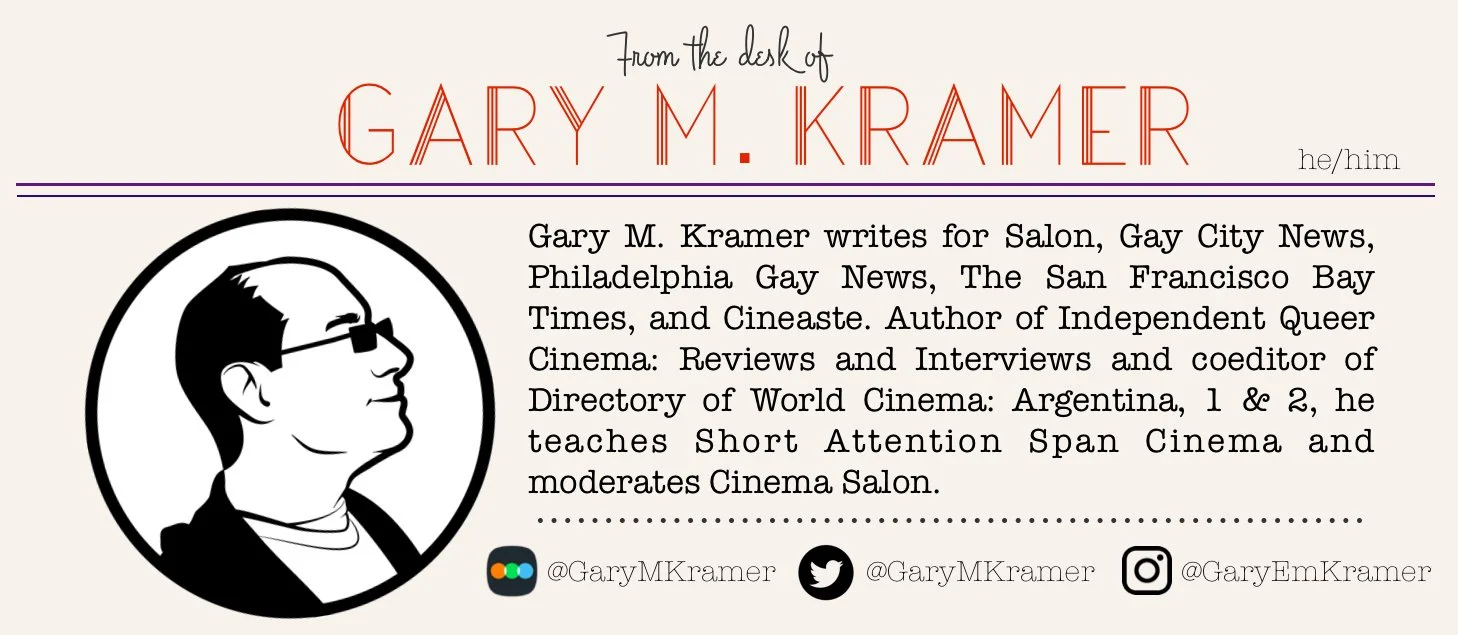CRUEL INTENTIONS at 25 remains indulgent and playful
by Gary M. Kramer, Staff Writer
There have been many screen adaptations of Choderlos de Laclos’ Les Liaisons Dangereuses, starting with Roger Vadim’s jazzy French version, Dangerous Liaisons in 1959.
In the late 1980s, two adaptations came out within a year—Stephen Frears’ Oscar-winning Dangerous Liaisons, starring Glenn Close and John Malkovich, and the subpar Valmont, directed by Milos Forman, featuring Colin Firth and Annette Bening.
In the 1990s, there was a trend towards making teen films based on classic literature. Clueless (1995) was a fantastic reimagining of Jane Austen’s Emma. A few years later by 10 Things I Hate About You (1999), based on Shakespeare’s The Taming of the Shrew, became a hit, and She’s All That (1999), was a contemporary Pygmalion.
As such, it made sense to make Cruel Intentions (1999), a teen version of Les Liaisons Dangereuses, set around the elite students at a tony New York school.
Directed by Roger Kumble, this deliciously decadent film is now 25 years old. It holds up better than costars Ryan Phillippe and Reese Witherspoon’s marriage; they tied the knot in 1999 after falling in love on set only to divorce 8 years later. Looking at it now, Cruel Intentions is still a cult classic despite being dated—e.g., the characters use flip phones.
The plot timeless as stepsiblings Kathryn Merteuil (Sarah Michelle Gellar) and Sebastian Valmont (Ryan Phillippe) make a wager. If he can seduce Annette Hargrove (Reese Witherspoon), “the paradigm of chastity,” and make her fall in love with him, Sebastian can have his ways with Kathryn, whom he has long desired. “You can put it anywhere…” she teases naughtily. But if he loses, Sebastian must give Kathryn his prized possession, a 1956 Jaguar Roadster. Let the games begin!
What makes Cruel Intentions so appealing is Phillippe’s mischievous turn as Sebastian. He exudes fake sincerity throughout the film, which is drolly amusing, and he manipulates almost everyone he meets. Even the opening scene with his therapist (Swoosie Kurtz) ends with her infuriated that he seduced and exploited her daughter. Sebastian’s terrible reputation makes Annette wary of his charms and watching him deliberately allow her to glimpse him nude from behind when he invites her to go swimming shows his efforts to break down Annette’s resistance. (But it had many straight women and gay men swooning.)
Annette claims that Sebastian is not her type, and the best he can hope for is friendship. Such declarations only make Sebastian redouble his efforts to seduce her. Meanwhile, Kathryn uses Cecile (Selma Blair) to get back at her ex, enlisting Sebastian’s aid to corrupt Cecile, with oral sex.
Cruel Intentions delights in being devious and the film is juicy as Kathryn blue balls Sebastian as he gets closer to achieving his goal. Kumble (who wrote the script) also includes some queer content, as when a gay character is outed and blackmailed, or when Kathryn teaches Cecile how to kiss in a park. In addition, white privilege is mocked as one subplot has Cecile’s mother Bunny (a suitably brittle Christine Baranski) infuriated by the idea of her daughter having a Black boyfriend (Sean Patrick Thomas). These scenes could never have worked in the 1800s which is one reason why this update is so salacious.
Kumble’s film wisely pays homage to Choderlos de Laclos’ epistolary novel with many scenes of or about letter writing. One of Sebastian’s wittier lines, and typical of his--and the film’s—withering disdain, he declares, “Email is for geeks and pedophiles.”
Phillippe sells his insouciance with every line and every gesture, such as a dismissive wave when he is told he can’t park his car in front of the building he’s entering. His performance also works well because he is convincing in his relationship with Witherspoon’s Annette—they do have some real chemistry—as well as his rivalry with Kathryn.
Alas, Sarah Michelle Gellar is slightly miscast in the pivotal role of Kathryn. She is bitchy when she should be icy. And while it is fun seeing her scheming, or snorting coke she keeps in a cross around her neck, Gellar fails to make viewers want her to win. It is the one misstep in this otherwise satisfying film.
In support, Witherspoon is charming, even if a scene of her in pigtails pulling faces—which makes Sebastian laugh and wins his heart—is cringy.
Cruel Intentions is best when it is wicked, as when Sebastian trolls Cecile with crude double entendres, or Kathryn secretly delights in informing Bunny about her daughter’s romance. But then it surprises with a scene of real emotion. Annette is unexpectedly greeted by Sebastian at Penn Station to the strains of “Colorblind” by Counting Crows, proving his feelings for her are real. (The soundtrack, which includes Blur, Aimee Mann, The Verve, and more is pretty great.) The film is so caught up in duplicity that this honest moment stands out.
Kimble’s film proves that a contemporary reworking of Choderlos de Laclos’ novel lends itself quite well to the teen film genre. It has become a cult classic because it features beautiful young people behaving badly. 25 years later, Cruel Intentions still rules.


